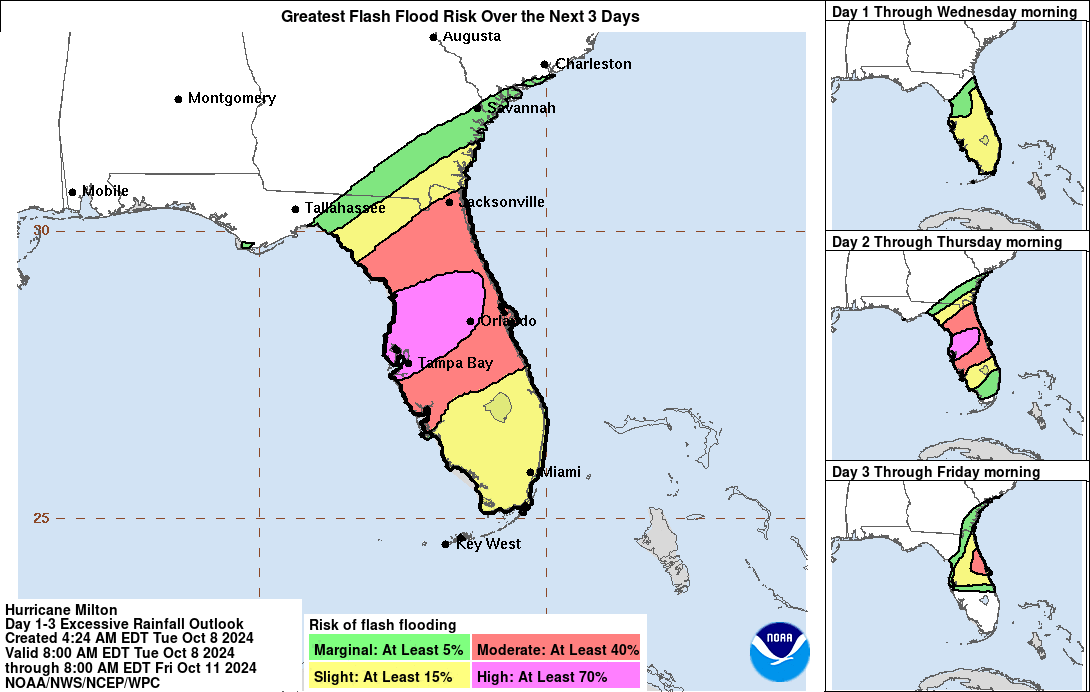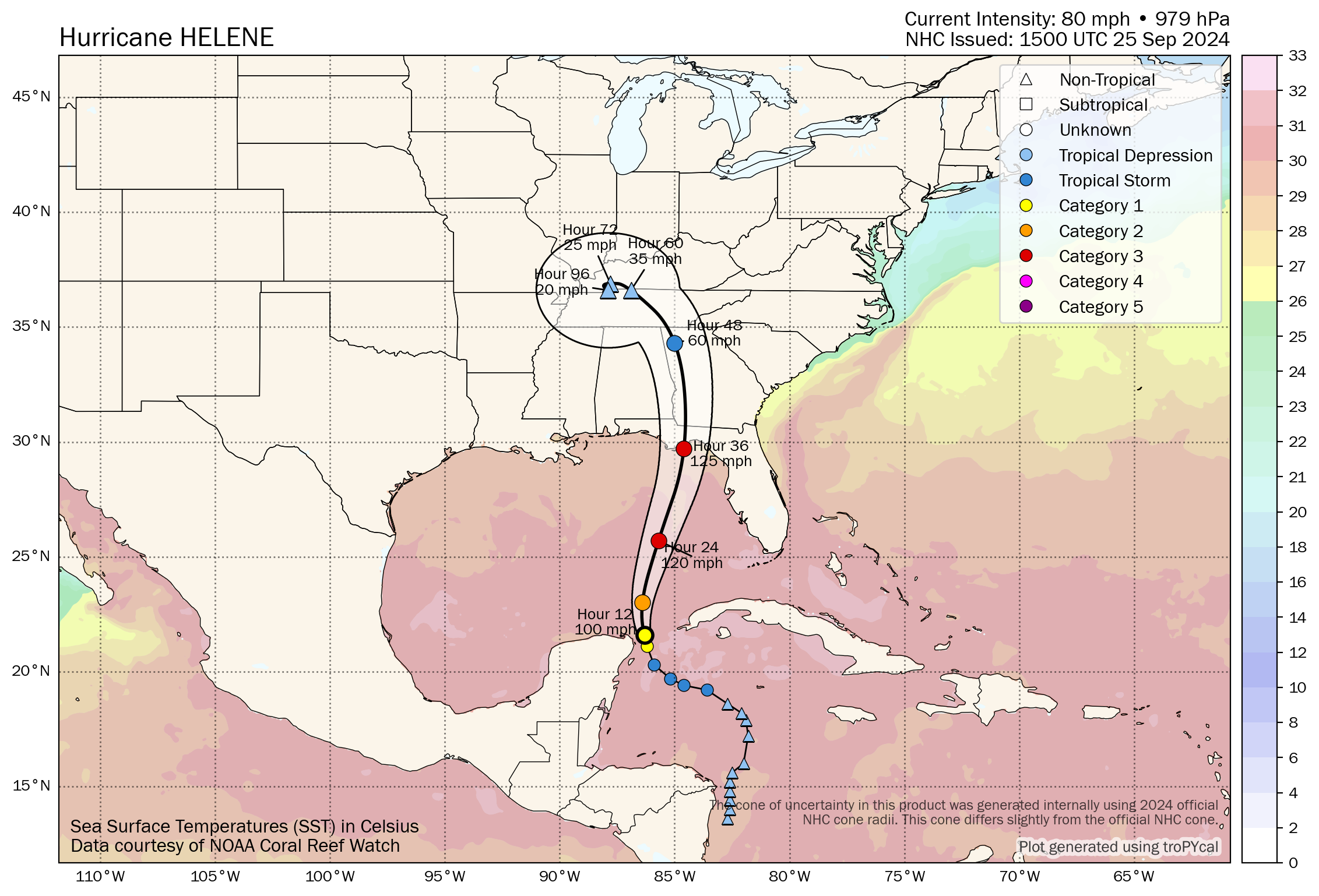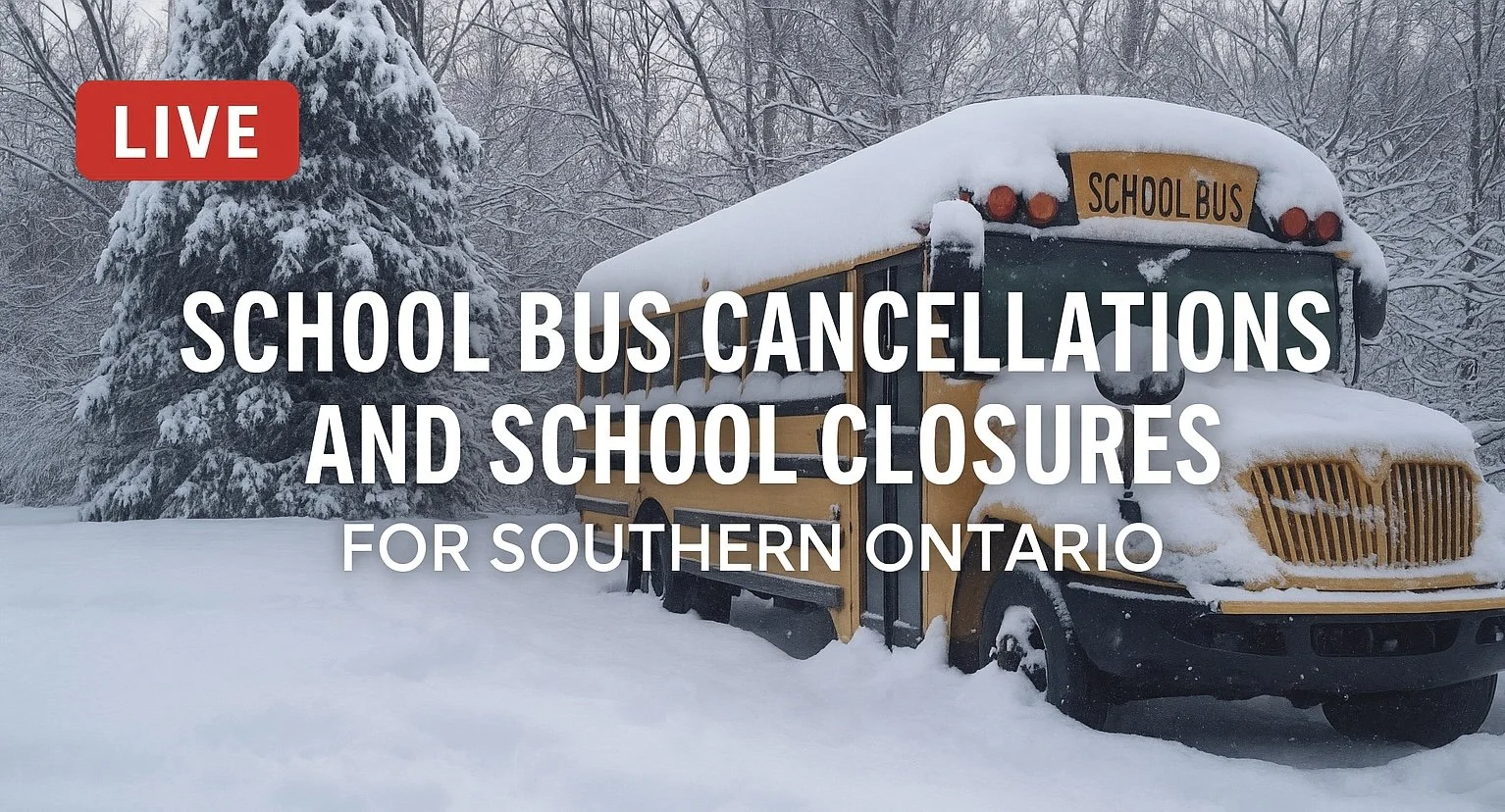Toronto’s Storm of the Century: Remembering Hurricane Hazel 70 Years Later
/Overhead view of Raymore drive in Toronto following hurricane hazel, courtesy of Toronto and Region Conservation Authority.
It was on this day 70 years ago, in 1954, that the now infamous Hurricane Hazel hit Southern Ontario and caused catastrophic damage to Toronto. It is considered the area’s worst natural disaster and has shaped development for years to come. The storm produced winds up to 124km/h and dumped over 200mm of rain in just 24 hours; left 81 people dead and over 4000 families homeless, 1868 of those families in Toronto; and caused over $135 million in damages in Ontario ($1.5 billion by today’s standards). Hazel changed the way conservation authorities operate across Ontario and those impacts are still felt to this day.
Hurricane Hazel's Path, October 14-15, 1954, Courtesy of the National Weather Service.
Hurricane Hazel was first identified on October 5, 1954 by a Hurricane Hunters aircraft from Puerto Rico which located it just east of the island nation of Grenada in the West Indies. The plane estimated that the storm was already a Category 2 hurricane with winds estimated at 160km/h, but this value was more recently revised to 105km/h, making Hazel a Tropical Storm at the time, during reanalysis of former hurricane seasons by NOAA. Hazel intensified following the Hurricane Hunters mission and it made its first landfall over Grenada on the evening of the 5th as a Category 1 hurricane with winds estimated at 120km/h.
From there, Hazel tracked west-northwestward off the northern coast of Venezuela for the next few days, gaining strength along the way. Late on October 9th, Hazel gained Major Hurricane status with winds estimated at 195km/h. The next day, the storm made a sharp turn and started churning northeastward, where it eventually made two separate landfalls on Haiti’s west coast, initially over the Tiberon Peninsula as a Category 3 with winds estimated at 195km/h in the pre-dawn hours on the 12th and then as a Category 2 with estimated winds of 160km/h later that same evening over the northern peninsula. Hurricane Hazel killed up to 1000 people in Haiti and devastated the economy, destroying 40% of the nation’s coffee trees and 50% of the cacao crop.
Following its second landfall in Haiti, Hurricane Hazel curled northwestward and made its fourth total landfall in Inagua, an island in the Bahamas, less than 18 hours later on the morning of the 13th. The storm maintained its Category 2 strength between the two landfall occurrences, hitting the Bahamas with winds estimated at 160km/h.
Beyond the Bahamas, Hazel gained speed and reintensified, becoming a Category 4 hurricane on the evening of October 14th. Just before noon on October 15th, Hazel made its fifth and final landfall near the border of North Carolina and South Carolina as a Category 4 hurricane with sustained winds of 215km/h and gusts up to 240km/h. Hazel quickly transitioned to a post-tropical cyclone, but it maintained hurricane-force winds as it quickly pushed through D.C., Pennsylvania, New York, and towards the Canadian border. The storm killed 95 Americans and caused over $1.5 billion of damage by today’s standards.
Surface Chart from 8:3pm ET showing the location of Hazel over Southern Ontario, Courtesy of the National Weather Service.
As Hazel made its way northward through the States, Canadian authorities began issuing warnings to the general public, but most people didn’t know how to prepare for a hurricane. The storm began to weaken over the Allegheny Mountains in West Virginia and meteorologists expected it to dissipate, however the opposite happened. Instead, Hazel encountered a low-pressure system over western New York and intensified just before it crossed into the Niagara Peninsula.
Hurricane Hazel was a post-tropical Category 1 storm that brought severe wind gusts of up to 124km/h to a large portion of Southern Ontario on October 15th, but the winds were not the main concern from the storm. By the evening rush hour, the winds began to die down, but according to Chief Meteorologist Brian Turnbull, the worst of the storm was yet to come. The days leading up to Hazel’s arrival were quite wet so when the heavy rainfall began in the late afternoon, it didn’t take long for flooding to begin. Significant deforestation and development on the saturated flood plains across Toronto could not contain the over 200mm of rain that fell in 24 hours which resulted in many rivers overtopping their banks, with water levels rising by up to 8 metres. The Humber River, in particular, became a deadly torrent through the city, washing away roads, bridges, and entire homes. Overall, the storm dumped 181.6 billion litres of rain on the City of Toronto.
In total, 81 people lost their lives from Hurricane Hazel, mostly in the west end of Toronto. Across Southern Ontario, approximately 4000 families lost their homes, 1868 of which were in Toronto. Raymore Drive was hit particularly hard with 14 homes being washed away, killing 35 people. Fortunately, the death toll could have been much worse if not for the heroics displayed by many police officers, firefighters, and ordinary citizens who worked tirelessly trying to save those who became stranded. Sadly, five firefighters lost their lives when trying to rescue trapped motorists.
The effects of Hurricane Hazel were felt beyond Toronto. Significant flooding was experienced in communities as far west as London and north to Georgian Bay as the storm progressed northwards to James Bay, where it eventually dissipated.
Members of the Harbour Patrol Rescue a man from the Don River, courtesy of the Canadian Encyclopedia.
In the aftermath of Hurricane Hazel, many changes were made to conservation authorities across Ontario, especially in the Greater Toronto Area.
An intensive plan was put in place by conservation authorities, along with both the municipal and provincial governments, for flood control and water conservation in order to limit loss of life and property from future extreme weather events. As part of this plan, flood control facilities were inspected, upgraded, or built alongside additional dams and reservoirs to control and monitor water levels. A flood forecasting and warning system was also a large component to the plan.
An amendment was made to the Conservation Authorities Act that allowed individual conservation authorities to obtain and control vulnerable areas to be used for conservation and recreation. As a result, many homes were cleared from low-lying areas and greenbelts were created within watersheds. This included the expropriation of most remaining properties on Raymore Drive by the Metro Toronto and Region Conservation Authority which was turned into parkland, now called Raymore Park.
As we look back on the anniversary of this tragic event, we want to remember those that were lost and all of the efforts that have been put in place since to prepare for future extreme weather events. The City of Toronto has seen many flooding events since Hurricane Hazel, and it will continue to do so for many year. However, major floods in 2013 and more recently in 2024 show that more work still needs to be done.
The G. Ross Lord Dam, One of the Many Flood Control Measures in Place Across Toronto, Courtesy of the Toronto and Region Conservation Authority.
Sources:
https://www.aoml.noaa.gov/hrd/hurdat/hurdat2.html
https://www.heritage-matters.ca/articles/hurricane-hazel-50-years-later
https://www.heritagetrust.on.ca/pages/programs/provincial-plaque-program/provincial-plaque-background-papers/hurricane-hazel
https://www.hurricanehazel.ca/ssi/evolution_flood_control.shtml
https://www.thecanadianencyclopedia.ca/en/article/toronto-feature-hurricane-hazel
https://www.thecanadianencyclopedia.ca/en/article/hurricane-hazel
https://www.trca.ca/news/hurricane-hazel-70-years/
https://www.weather.gov/mhx/Oct151954EventReview



















































